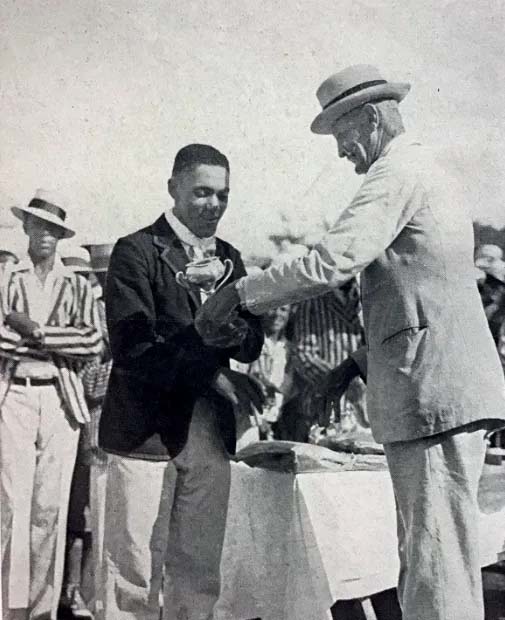The island grinds to a halt. It’s a celebration of the ancestors. It’s the island’s annual party. It’s an extended holiday weekend. It’s an English tradition. American tourists flock to this carnival. There is live coverage on radio and television. The locals will not miss it. It’s one of the oldest rivalries in sport. It’s more than a game of cricket. It’s Bermuda’s Annual Cup match.
Bermuda
Bermuda is the cap of an extinct submarine volcano which sits in the middle of nowhere, the only landmass in the Sargasso Sea, a region in the Atlantic Ocean with no land boundaries, but by four currents which form an ocean gyre. It is located 640 miles east of Cape Hatteras Island, one of the Outer Banks, a long chain of barrier islands just off of North Carolina’s east coast, and 900 miles north of the Bahamas. It is an archipelago of 181 islands, 20 of which are inhabited, with eight connected by bridges. Its total landmass is a paltry 20.5 square miles.
In 1612, the first English settlement, New London was established. Later renamed St George’s Town, it is the oldest continually inhabited English town in the New World. Unsuitable for the growing of tobacco, cotton or sugar cane, Bermuda was virtually ignored by the colonial masters until enterprising settlers turned to the sea as privateers – officially private individuals holding a government commission but allegedly involved in piracy and gun running – whalers and merchant traders. (The first activity is considered the forebearer of the classic Bermudian stance toward risk-taking and ‘by-hook-or-by-crook’ entrepreneurship).
As the economy shifted to a maritime focus, the British established, in the 19th century, what would eventually become its most important naval and military base in the western hemisphere, spending vast sums on the Royal Naval Dockyard. By virtue of its location, Bermuda was critical for Confederate smugglers during the American War of Independence, the planning and launching of attacks on Washington DC and Chesapeake during the War of 1812, and to the Allies during both world wars, facilitating a naval air base, a submarine base, and the marshalling point for trans-Atlantic convoys.
The Bermudian entrepreneurial spirit ignited during the days of the privateer has never waned. During America’s Prohibition period (1920 -1933) the island served as a source of illegal alcohol. Tourism became an important part of the economy during the early part of the last century, as American, Canadian and English visitors flocked to the island by ship, attracted by the clear blue ocean waters washing the pink sand beaches. During the 1970s, the island became an offshore financial centre and a tax haven. Today, Bermuda enjoys one of the highest GDPs per capita in the world.
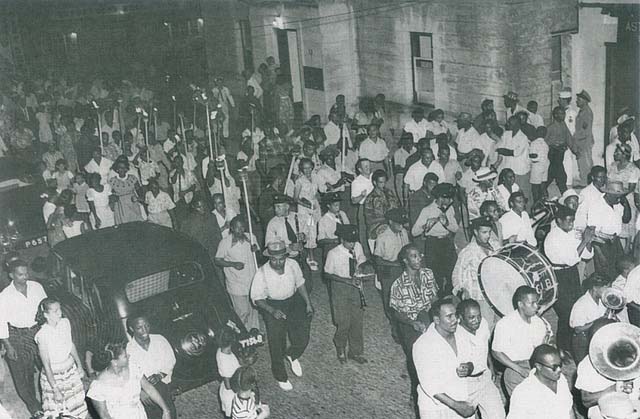
Bermuda and West Indies Cricket
Originally, the colonial powers had classified Bermuda as part of the Colony of Virginia, before grouping it with the Maritimes, Newfoundland and Labrador (of Canada). Today, it is one of 14 British Overseas Territories, along with Anguilla, Cayman Islands, Montserrat, and Turks and Caicos Islands. It is quite often mistakenly placed in the Caribbean – perhaps an offshoot of the overwhelming Caribbean tourism marketing mantra ‘blue sea, white sand, sunshine and rum’ – when it is fact so far away that it is in another time zone, one hour ahead. In July 2003, Bermuda joined Caricom as an associate member, a government decision that was not wholeheartedly endorsed by the population.
Besides, sharing a similar history of colonialism and slavery, Bermuda and the Caribbean possess a common passion for the game of cricket. The sport was introduced to the island by the British soldiers stationed at the Bermuda Garrison which had been built to secure the naval dockyard, and the first recorded match played in Bermuda was on 30th August, 1844. The Bermuda Cricket Club was formed in 1845. In 1948 the Somers Isles Cricket League joined with the Bermuda Cricket Club to form the Bermuda Cricket Board of Control. In 1966 Bermuda became an associate member of the ICC.
When the West Indies held trial matches for the 1933 summer tour of England, in Trinidad in January, Alma Victor ‘Champ’ Hunt, widely regarded as the best Bermudan cricketer, was invited to the trials on the recommendation of Dr Edgar Gordon, a native Trinidadian, who was then practicing medicine, and also a renowned labour leader in Bermuda. Hunt, an allrounder – left-handed batsman and medium fast right arm bowler – performed well in the three trial matches, scoring two fifties and taking ten wickets. However, the West Indies Cricket Board (WICB) ruled that Hunt was not eligible for selection since Bermuda, which had no cricket board at the time, was not affiliated with the WICB. Hunt’s omission from the team caused outrage in Bermuda and the Caribbean, and even made newspaper headlines in England. The debate never rested as to whether the affiliation clause was a convenient reason or an excuse not to select Hunt since he was a non-West Indian. A disappointed Hunt would go on to enjoy a successful career as a professional with Aberdeenshire in Scotland, before and after World War II.
Gordon, a cricket lover, was a persistent individual and in late August 1939, just as the West Indies Test team aborted their summer tour at the outbreak of World War II (In Search of West Indies Cricket, The Abandoned Tour, SN, 11th September, 2016), he was welcoming a West Indies team to Bermuda for a five-match tour. The West Indies side was captained by former Test player Ben Sealey; and included another Test player George Carew; future Test players Robert Christiani, Prior Jones, and Berkeley Gaskin; Trinidadians Elias Constantine (Learie’s brother) and Rupert Tang Choon; and Chatterpaul Persaud from British Guiana. The visitors won two matches against Bermudian XIs by an innings, with two matches drawn and the other result unknown.
The West Indies and Bermuda did not develop a cricket relationship, however, and it was not until July 1965 that another West Indian XI visited the island for a series of seven matches. (Unfortunately efforts to unearth details of the touring party and match results have so far proven futile.) In 1969, on the way home from the disappointing 0-2 Test series loss in England, the West Indies played a two-day match in Bermuda. With players remaining in England to fulfil professional contracts, the West Indies were reduced to eight and had to engage the services of manager Clyde Walcott, his assistant Peter Short and an Antiguan living in Bermuda, Albert Donawa. Scores in the drawn match were Bermuda 264 and West Indies 150 for four.
In June 1993, a West Indies Select team led by Roland Holder, and including future Test players Shivnarine Chanderpaul, Stuart Williams, Ridley Jacobs, Franklyn Rose, Cameron Cuffy, and Courtney Browne, swept all six matches on their tour of Bermuda. At the end of August and in the first week of September 2004, prior to winning the ICC Champions Trophy tournament in England, the West Indies held a training camp in Bermuda, where they played three warm-up matches, two against a Barbados XI and one versus Bermuda.
Touring teams to the West Indies have visited Bermuda for goodwill matches after departing the Caribbean. However, Len Hutton’s 1953/54 side to the West Indies stopped first in Bermuda in December, playing three matches, and spent Christmas on the island. The 1973/74 MCC side (the last English team under that banner) played two games there in April en route to London. The 1958 Pakistani Test team spent two weeks in April, playing seven matches before flying to the US and Canada to play more cricket. The departing 1972 New Zealanders played one match in April, while their 1996 compatriots enjoyed two games in May. In 1978 the Australians played three matches, while both their 1991 and 1995 teams entertained the Bermudians with a pair of games, all in the month of May. The 1997 Indian touring team also played two matches in May.
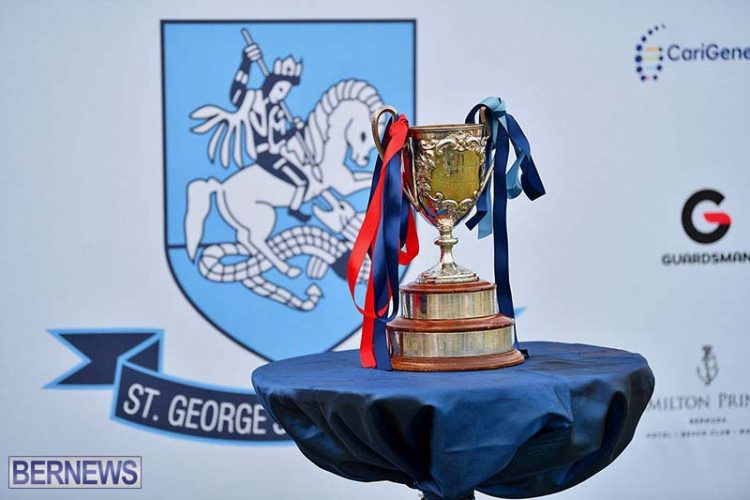
bernewscupmatch.com)
Annual Cup Match
While the occasional pit stops by Test teams in Bermuda are well received and expose the local players to a higher standard of play, the highlight of their cricket calendar remains the Annual Cup Match between St George’s and Somerset. The origins of the match lie in the annual celebration of the end of slavery on the island, 1st August, 1834, Emancipation Day.
After emancipation, Bermuda was a rigidly segregated society, and Black Bermudians formed friendly societies to look out for each other. These societies organised the first celebrations and picnics, and the unauthorised day off, as it was not an official holiday. Beginning in the mid-1880s, an informal cricket match was arranged somewhere on the island as part of the celebration, and with the passage of time, it became the focal point of the activities as more and more persons gravitated to the game. The match pitted the Loyal Victoria and Albert Lodge from the west end of the island against the Somers Pride of India based on the eastern side of the island.
Alma Hunt writing on the 50th anniversary of the Cup Match stated that after the 1901 game between the friendly societies from the opposite sides of the island at Garrison Field in St George’s, Jim Packwood suggested that the two sides play for a cup. Henry Cann, the secretary of the Somerset Cricket Club duly ordered the cup from Gold, Smith and Company; funds were raised by the two societies. Thus, in 1902, the first official Cup Match was held with a best of three format. Somerset hosted the first encounter on June 12, at the Royal Naval Field, with the visitors winning by seven wickets. St George staged the second on July 10 at the Garrison Field, and the third match was played on August 21 at Somerset.
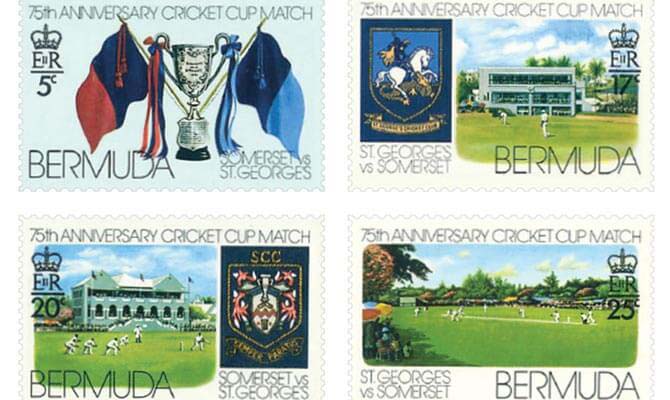
anniversary of the Cup Match
In 1903, the two-day format was adopted. Hunt wrote: “There was no written authority as to the reason for this. Some of the old-timers say there was a blow-up in one of the games which influenced this change.” That year also yielded the first century total as St George’s marched to victory. The following year, Somerset’s C Trott scored the first half century, 59 not out, as his side topped the 200 mark. The 1907 contest resulted in the first drawn match. During the next decade Somerset reeled off six consecutive victories between 1914 and 1919.
The date for the Cup Match fluctuated for the first 20 years, ranging from as early as 20th July to as late as 12th August before it was formalised to the last Thursday and Friday before the first Monday in August. During this period, the mid-1920s, admission to the match was charged for the first time. The date of St George’s selecting dark and light blue as their colours, the same as Oxford and Cambridge universities, remains unclear, but the choice is credited to Walter Darrell, a tailor.
In 1921, the Wellington Oval was opened as the new home for St George’s, with red clay being utilised for the pitch, which was replaced with cinder the following year, before giving way to concrete and matting the next year. In 1926, St George’s inflicted the first innings defeat in Cup Match history, winning by an innings and 49 runs at home. The following year, 16-year-old Alma Hunt made his Annual Cup debut, leading Somerset to victory with a fighting second innings knock of 36.
The 1930s saw another period of Somerset dominance as they won six times between 1930 and 1936, and retained it with a draw in 1937, as the 16,000 in attendance witnessed St George’s Edward ‘Bosun’ Swainson score the first hundred in Cup Match history. His innings of 122 surpassed Hunt’s record score of 82, set in 1932.
The 1940s belonged to Somerset as they held onto the Cup for all but two years. In 1941, Hunt got that elusive century, scoring 104 out of his side’s total of 127 for seven. In 1947, the two days were finally celebrated as official holidays, over 100 years after slavery had ended. The first day was renamed Emancipation Day in 1999 (Bermudians still call it Cup Match) and the second day was called Somers Day in recognition of Admiral Sir George Somers who colonised Bermuda in 1609. In 1948, in his last Cup Match. Hunt, in his only turn as captain, led his side to victory by an innings and 11 runs. In 1949, Somerset’s new ground was opened, but the fans of the red and blue would have to wait another five years for a home victory celebration.
In 1951, Alec ‘Cocky’ Steede retired after appearing in the Cup Match for 30 years spread over four decades, dating back to 1922. Steede was the first bowler to capture 100 wickets in the annual classic. In the 1952 Cup Match, both teams were coached by Hunt. Since the 1950s the game has been covered in its entirety by local radio stations.
St George’s dominated the 1960s and the 1970s, setting the record for the longest reign in Cup Match history as Somerset, winners in 1959 endured a 20-year drought before winning again in 1979. During this period, St George’s Captain Calvin ‘Bummy’ Symonds led his team to eight wins in nine years, including six consecutive from 1964 to 1969, to become the most successful captain in Cup Match history, whilst never losing a match. Both teams introduced turf wickets in the 1970s, Somerset in 1971, with St George’s following suit a year later.
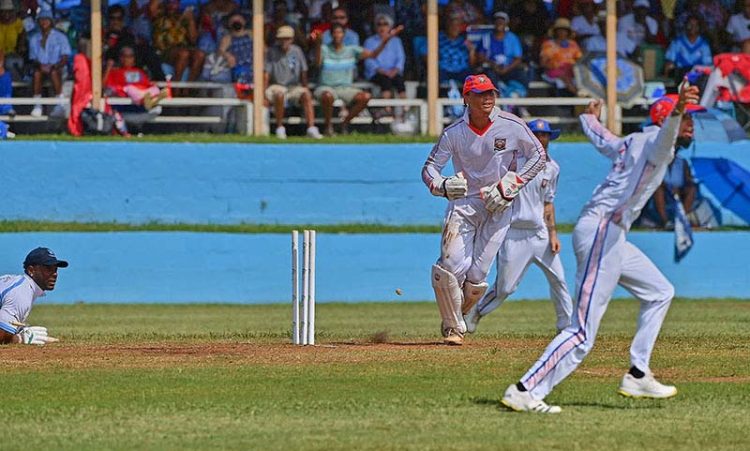
(Photo from bernewscupmatch.com)
In 1995, the clubs agreed to alternate the venues from one year to the next, thus eliminating the rule that a team could play at home two years in a row.
After unprecedented scenes at the 2005 Cup Match involving players from both sides, the Bermuda Cricket Board intervened in the clubs’ arrangement and brought in retired Test Umpires, Englishmen David Shepherd and Mervyn Kitchen to officiate at the 2006 encounter. In 2008, the entire match was televised for the first time.
In 2020, the Cup Match was cancelled due to the Covid-19 pandemic, and the second day of Cup Match was renamed Mary Prince Day, in honour of the Bermudian author whose book about slavery is credited with assisting to stimulate the anti-slavery movement.
Somerset wrested the cup from St George’s in 2012 and have retained it ever since with wins in 2014, 2016, 2017, 2018, 2021 and 2022, the last two by 10-wicket margins, with the other matches drawn. The 2023 Cup Match Classic was played on 3rd and 4th August at St George’s Cricket Club on Wellington Slip Road in St George’s Parish. Scores: Somerset 404; D C Stovell 139, Z Burgess 4/59; St George’s 219 & 242 for 6. Match Drawn. Somerset retains the Annual Cup.
A cricket match has captured the heart and soul of a tiny island nation in the Atlantic. The fans of both teams thrive on the intense rivalry which the history and culture of the event has generated. They arrive in droves to support their teams, enjoy the camaraderie, remember their ancestors who are commemorated on the first day of the match, take their chances on the crown and anchor tables (which hark back to the days of the British naval presence), socialise with friends and family, and most importantly, savour the shifting fortunes only a cricket match will bring.
St George’s super fan, Kenny Foggo sums up the event, ‘’It’s all a celebration – whether we have the Cup, don’t have the Cup, win the game, draw the game or lose the game. The biggest thing for me is focusing on the game and the meaning behind the holiday. To me, Cup Match is about the people. Where I sit, I have Somerset fans on one side of me, and St George’s fans on the other. These are people I only see at Cup Match, so the camaraderie and banter that goes on before, during and after the game, it’s all a part of the two days. On top of that, there’s nothing better than an ice cold Heineken.” (Extract from the 2019 RG Cup Match Supplement).
The 2024 Annual Cup Classic is scheduled for Thursday, 1st August, and Friday, 2nd August, at Somerset Cricket Club in Sandy’s Parish.
